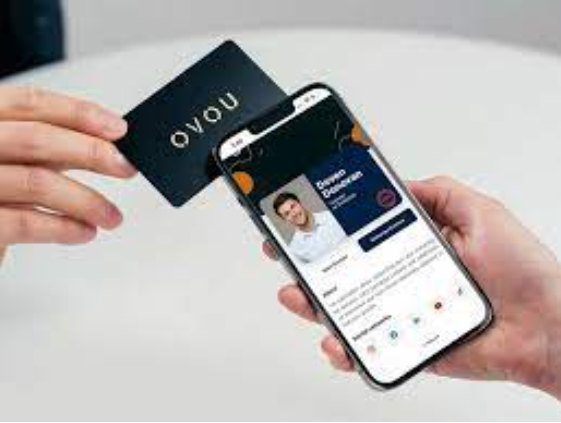Digital Transformation in Networking: The Rise of NFC Business Cards

In today’s fast-paced, hyper-connected world, first impressions are often made in milliseconds. Whether you’re a business owner, entrepreneur, or job seeker, how you present yourself matters — and that includes how you network.
Gone are the days of stuffing wallets and pockets with paper business cards. Say hello to the sleek, smart, and sustainable alternative: NFC business cards. These cards are at the center of a digital transformation that’s changing how professionals connect.
Let’s dive into how this tech revolution is unfolding and why NFC business cards are quickly becoming the future of networking.
What is NFC Technology?
Before we delve into the cards themselves, it’s essential to understand the core technology behind them — NFC, or Near Field Communication.
NFC is a short-range wireless technology that allows data to be transferred between two devices when they’re placed close to each other, typically within 4 cm (1.5 inches). You may already use it daily for contactless payments via your smartphone or smartwatch.
When embedded into a business card, NFC transforms it from a simple piece of plastic or paper into a smart, interactive tool.
See also: Smart Tips for Using Small Payment Cashing Services
Traditional vs. NFC Business Cards
| Feature | Traditional Cards | NFC Business Cards |
| Material | Paper/Cardstock | Plastic, metal, wood, and eco-materials |
| Sharing method | Hand over physically | Tap to phone |
| Update information | Static (can’t update) | Dynamic (editable anytime) |
| Storage capacity | Limited | Links, videos, contact details, social media, etc. |
| Environmental impact | Disposable | Reusable & sustainable |
How NFC Business Cards Work
NFC cards are embedded with a microchip that communicates with a smartphone or other NFC-enabled device. When someone taps their phone to your card, it instantly opens a digital profile. This can include:
- Your name, title, and contact information
- A direct link to your LinkedIn, website, or portfolio
- Buttons to call, email, or save contact details
- Social media links
- Embedded videos or promotional content
No apps are required. It’s quick, contactless, and seamless.
Why NFC Cards Are Gaining Popularity
1. Convenience and Speed
Networking events are busy and fast-paced. NFC cards offer a way to share information instantly, without fumbling for a pen or worrying about someone losing your paper card.
2. Professional Impression
Handing someone a digital business card screams modernity. It subtly says, “I’m up to date with the latest tech — and serious about my brand.”
3. Sustainability
An estimated 10 billion paper business cards are printed each year — and 88% are thrown away within a week. That’s a lot of trees for very little impact. NFC cards are reusable, reducing waste significantly.
4. Real-Time Updates
Have you ever changed your phone number, email, or job title — and suddenly, all your old cards are useless? With an NFC card, your digital profile can be updated in real time, anytime.
5. Analytics and Engagement Tracking
Some NFC business cards come with analytics features. You can track how many people tapped your card, which links they clicked, and how they engaged with your content. This adds a layer of measurable value to your networking.
Industries Leading the Charge
💼 Corporate Professionals
From CEOs to sales reps, NFC cards allow professionals to showcase portfolios, products, or testimonials instantly.
💻 Tech Startups
Startups love innovation, and NFC cards fit right in with their digital-first mindset.
🎨 Creative Industries
Designers, photographers, and marketers can use NFC cards to link directly to their work, making it easy to share a visual portfolio on the spot.
🛠️ Freelancers and Consultants
Having a professional, all-in-one digital card helps independent workers stand out and make a memorable impression.
How to Create an NFC Business Card
Here’s a simple step-by-step guide:
Step 1: Choose a Provider
There are many services that offer customizable NFC business cards — made from metal, wood, or sustainable materials. Pick one that fits your style and brand.
Step 2: Customize the Design
Upload your logo, select fonts and colors, and choose your card’s shape and finish. Many services let you preview the final look.
Step 3: Build Your Digital Profile
Add links to your website, social media, and contact info. Some platforms let you upload a headshot or intro video too.
Step 4: Program the NFC Chip
The provider will usually pre-program your card, or you can do it yourself using an app. You can always change or update the content later.
Step 5: Test and Share
Tap it on your own phone to make sure everything works — then you’re ready to start networking smarter!
Best Practices for Using NFC Business Cards
- Always Ask First: Not everyone is familiar with NFC. Politely ask if they’d like to tap your card.
- Keep It Updated: Check your profile regularly to make sure all links work.
- Use a Short, Memorable URL: If someone’s phone isn’t NFC-compatible, having a backup QR code or short link is helpful.
- Track and Analyze: Use analytics features if available to understand what content engages your audience most.
Are There Any Drawbacks?
While NFC business card are impressive, they’re not without limitations:
- Not All Phones Are Compatible: Some older smartphones may not support NFC.
- Privacy Concerns: Sharing links or personal info should be done thoughtfully, especially in sensitive industries.
- Initial Cost: NFC cards are more expensive than paper ones — but they’re a long-term investment.
What’s Next for NFC in Networking?
As technology continues to evolve, we’re likely to see NFC business cards integrating with AI assistants, CRM tools, and even augmented reality. Imagine a future where tapping a card instantly books a calendar meeting, pulls up an interactive presentation, or integrates directly with LinkedIn.
NFC vs QR Code: Which One is Better?
While both are modern tools for digital networking, NFC has some clear advantages:
| Feature | NFC Card | QR Code |
| Interaction | Tap-based (no camera needed) | Needs camera app |
| Aesthetics | Sleek and minimal | Often printed and scanned |
| Speed | Instant transfer | Slightly slower process |
| Usability | More seamless | Still widely accepted |
That said, combining both on one card can be the best of both worlds — ideal for reaching every kind of user.
Conclusion: Tap Into the Future of Networking
NFC business cards are more than just a techy gimmick. They’re a reflection of where the professional world is heading — toward smarter, faster, more eco-friendly ways of connecting.
If you’re ready to level up your first impression and leave a lasting mark, it might be time to ditch the paper and go digital.
🌟 Final Tip:
Want to make your NFC business card unforgettable? Add a personal video message or a short intro reel to greet your new contacts with a smile. It’s personal. It’s powerful. And it’s the future.
Frequently Asked Questions (FAQs)
1. What does NFC stand for?
NFC stands for Near Field Communication. It’s a wireless technology that enables devices to exchange data when they are brought close together, typically within 4 cm.
2. Do I need an app to use an NFC business card?
No app is required. Simply tap the NFC card to a compatible smartphone, and it automatically opens your digital profile or link in the browser.
3. What if someone’s phone doesn’t support NFC?
Most modern smartphones do support NFC. However, it’s wise to include a QR code or short link on your card as a backup for older devices.
4. Can I update the information on my NFC card after printing?
Yes! One of the biggest advantages of NFC cards is the ability to edit your digital content anytime without changing the physical card.
5. Are NFC cards secure?
Yes. NFC technology is inherently secure due to its short range. Plus, you control the content shared, and there’s no risk of sharing sensitive data unless you choose to.
6. How long does an NFC business card last?
With proper care, Digital Business Cards can last many years. Unlike paper cards, they’re not prone to tearing or fading — making them highly durable and reusable.
7. Can I link my card to multiple platforms (like LinkedIn, email, and a portfolio)?
Absolutely. Most NFC platforms allow you to create a multi-link digital profile with buttons to LinkedIn, email, phone, website, and even video content.
8. Is it possible to design a custom NFC card?
Yes. Many providers offer custom designs, including company logos, colors, materials like metal or wood, and even unique shapes.
9. How much do NFC business cards cost?
Prices vary depending on materials and features. On average, they range from $15 to $50, but it’s a one-time cost — unlike reordering traditional cards.
10. Are NFC business cards eco-friendly?
Yes. Because you only need one reusable card, NFC cards significantly reduce waste compared to traditional paper cards.




